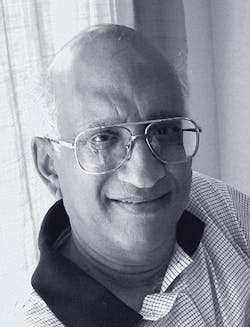Leading the reverse trend are the kinds of jobs that are considered core to the business, requiring higher skills and training than what is typically available offshore. Some high-level jobs that were originally sent offshore brought poor results—those jobs are coming back first.
A decade ago, when consultants such as Boston Consulting Group insisted that not outsourcing offshore was tantamount to missing out on a major strategic benefit, many kinds of jobs were moved offshore. As the American economy tightened, offshoring became a rush, to generate what was thought to be immediate cost-benefits.
But now, many companies are reversing earlier offshore outsourcing decisions, for skilled jobs as well as regular manufacturing work. U.S. businesses are recognizing that cheap, exploited foreign labor is only a short-term expedient. The recent lead-based paints and tainted-milk scares in China, and similar problems in other countries, brought this recognition: If other countries had to comply with the same environmental laws and safety regulations, the costs would substantially increase.
Meantime, Chinese labor costs are rising about 15 percent to 20 percent a year. That makes producing goods in China not nearly as cheap as it used to be. For many manufacturers, that narrowing is enough to tip the balance back to U.S. plants. This led them to question whether some work could be outsourced closer to home where inflation is low and the economic climate is more predictable. There are domestic outsourcing alternatives that are both financially sound and good for American workers.
And BCG too is reversing earlier advice: When currency fluctuations and rising wages in emerging markets are factored in, the United States is becoming a lot more attractive. Beyond just high-tech jobs, many American businesses are bringing jobs home again. Here are some examples:
1. NCR has hired about 500 workers to build ATM machines and self-service checkout systems at a Columbus, GA. plant, and it plans to add another 370 jobs by 2014, building products that were formerly produced at plants in China, Hungary and Brazil.
2. Greater quality was the major factor cited by Carbonite for moving back jobs to the United States. Its call center in India was having turnover of 100 percent or more each year, compared with just single-digits in the Boston call-center. The U.S. base provides much better service and customer satisfaction.
3. GE has reopened a Louisville plant that had been closed for decades, based on the fact that it’s no longer as expensive to hire U.S. workers.
The industrial automation business has examples of the reverse trend—offshore companies with local offices and skilled staff offering services to American customers. India-based control systems integrators are offering software development, systems integration and local service support at hourly-rates that most U.S.-based SIs cannot compete with. Some successful systems integrators and service companies that have plenty of work in the hopper are considering outsourcing to these “local” services to reduce costs, supplement their own staff and improve competitiveness. As this trend develops, the emergence of some multi-national hybrid businesses is inevitable.
As the cost gaps narrow in the coming years, this “re-shoring” trend is likely to grow. In American job markets where hiring has been stalled, offshoring repatriation is an encouraging sign.
Jim Pinto is an industry analyst and commentator, writer, technology futurist and angel investor. You can e-mail him at: [email protected]. Or review his prognostications and predictions on his Web site: www.JimPinto.com.Subscribe to Automation World's RSS Feeds for Columns & DepartmentsAbout the Author

Leaders relevant to this article:
